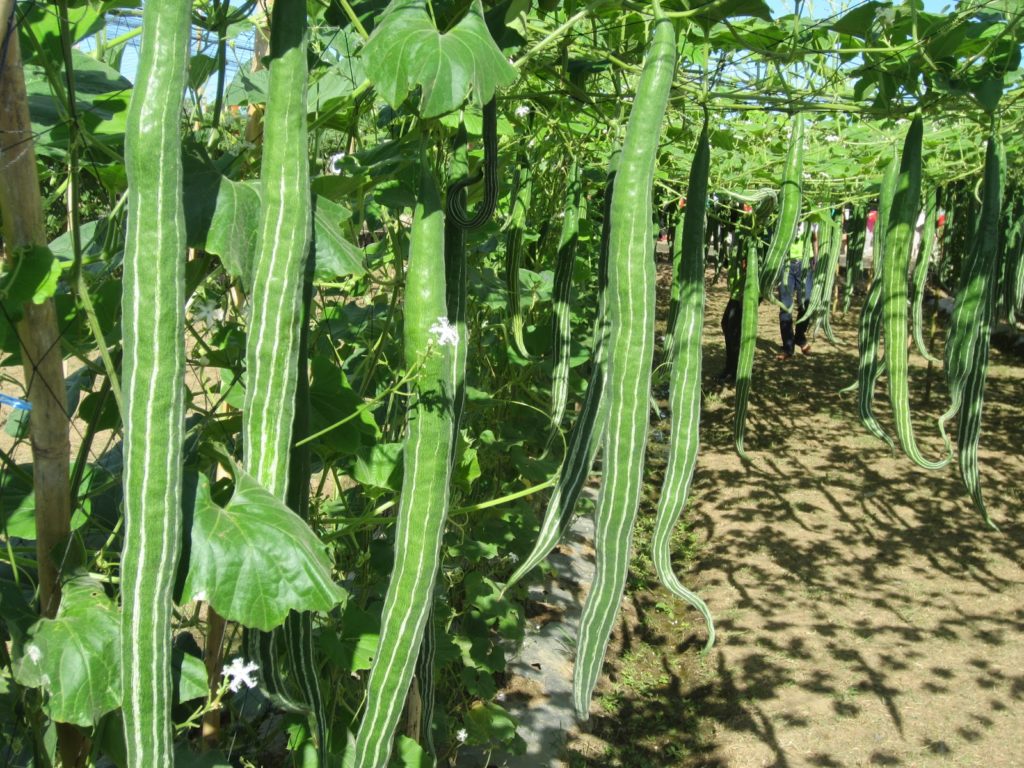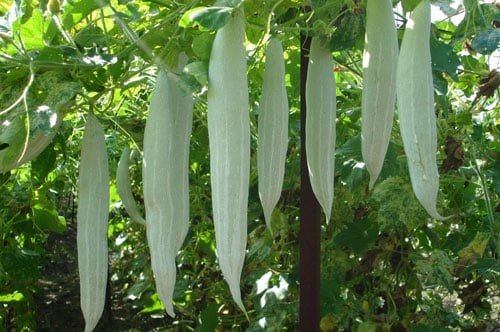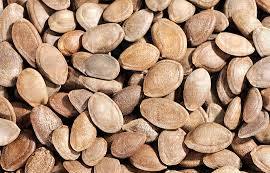A guide for growing snake gourd vegetable
A step by step guide for growing snake gourd, planting, care, and harvesting. It also covers growing snake gourds from seeds. Guys, snake gourd farming is fun and profitable. Personally, I love this vegetable.

Introduction of Snake Gourd:
Snake Gourd is a very important Indian vegetable crop and it can be grown throughout the year. Snake gourd may not be a type of vegetable that is known around the world, but certain cultures have been using this unique food variety for hundreds of years. They are native to Southeast Asia, including India, Myanmar, Indonesia, Sri Lanka, and other neighboring countries.
Health Benefits of Snake Gourd:
- Snake gourd is fat-free, low in calories and good to include in weight-loss regular diets.
- Snake gourd has a cooling effect on the body due to it’s high in water content, hence it aids in handling the summer heat.
- Snake gourd is good in the source of vitamins and minerals contents like iron, calcium, phosphorus and a substantial amount of carotene, traces of riboflavin, thiamine, and niacin
- It is very rich in fiber to keep your digestive system healthy, it will be useful for aiding constipation.
Local Names of Snake Gourd in India:
Potla kaya (Telugu), Pudalangai Kootu (Tamil) , Paduvala Kaayi (Kannada), Padwal (Hindi), Paḍawaḷa ( Marathi), Padavalanga (Malayalam).
Commercial Varieties of Snake Gourd:
Below are some of the commercial varieties of Snake Gourd cultivated in India.
CO-1, CO-2, PKM -1, MDU -1 , PLR (SG)-1,PLR 2.

Best Season for growing Snake gourds:
January and July are the best time for Snake Gourd cultivation.
You may also like Coriander Farming Project Report.
Climate required for Snake Gourd Production:
Snake Gourd grows very well in a hot and warm climate, the ideal temperature for Snake Gourd cultivation is 25° to 38°C.
Soil and its Preparation for Snake Gourd Plantation:
Snake Gourd can be grown in a wide variety of soils. But it grows best in sandy loam soils with rich organic compost. The soil or main field should be prepared thoroughly by 3 – 4 ploughings and soil pH ranging from 6 – 7 is suitable for Snake Gourd cultivation. Snake Gourd crop requires good soil drainage. Better yield and quality of vegetable depends on the organic matter or Farm Yield Manure (FYM) application while preparing soil or land.
Plantation of Snake Gourd:
Plough the main field to a fine tilth and dig pits of size 30 x 30 x 30 cm at 2.5 m x 2 m spacing and form basins.
Seed treatment of Snake Gourd:
Before sowing, Snake Gourd seeds have to be treated with Pseudomonas fluorescens 10 grams or Trichoderma viride 4 grams/kg of seeds.
Seed Sowing in Snake Gourd farming:
Usually, Snake Gourd Plantation spreads during July and January. The Snake Gourd seed sowing time depends on the type of crop season.

The Seed rate of Snake:
An average seed rate in Snake Gourd farming is about 5.5 kg- 6.5 kg/ha.
Methods of Sowing and Spacing in Snake Gourd:
The Snake Gourd seeds are sown by dibbling method at 1.5 m to 2.0 m X 1.0 m to 1.5 m. Sow 5 seeds in each pit. After germination, thin to 2 healthy seedlings after 2 weeks of sowing. The seeds also can be sown in poly bags. 4 seeds per bag are ideal and 15 days after germination, they can be planted at 4 seedlings per pit in the main field.
Intercultural Operation of Snake Gourd:
During the early stage of Snake Gourd plants growth, shallow cultivation in the field is preferred. The vegetable plants should be provided some kind of support with sticks for better creeping.
Manure and Fertilizers of Snake Gourd:
40 to 50 cartload well decomposed organic Farm Yard Manure (FMY) should be applied at the time of soil or mainland preparation. 100 grams of NPK 6:12:12 mixture as basal dose/pit and N @ 10 grams/ pit 30 days after sowing the seeds. Apply Phosphobacteria and Azospirillum @ 2 kg/ha and Pseudomonas 2.5 kg/ha along with Farm Yard Manure 50 kg and neem cake at100 kg before the last plowing in the main field.
Water requirement of the Snake Gourd:
Water the basin before dibbling the snake gourd seeds and afterward, once in a week is recommended. Drip irrigation is most beneficial in Snake Gourd farming. The summer plantation requires frequent watering at an interval of 4 to 5 days. Normally rainy season crop does not require any watering.
Weed Control of Snake Gourd Vegetable
Weeding and Hoeing can be done twice or thrice or as and when necessary. Provide stakes and train the plants to reach the pandal height (2 meters). The pandal is not essential for Co- 2 variety. Spray Ethrel 100 ppm (1 ml in 10 liters of water) at least four times from 10 to 15 days after sowing at weekly intervals.
You should also check the Green Fodder Importance.
Pests and Diseases of Snake Gourd:
Main pests in Snake Gourd farming are Leaf Beetles, caterpillars and fruit flies.
1) To Control Leaf beetles and leaf caterpillars: Spray Dichlorvos 76% EC 6.5 ml/10 lit or Trichlorofon 50% EC 1.0 ml/l.
2) To Control Fruit fly: Collect the damaged snake gourd vegetables and destroy them.
Main Diseases in Snake Gourd farming are Downy mildew and Powdery mildew.
- Powdery mildew in the plants can be controlled by spraying Dinocap 1 ml/lit or Carbendazim 0.5 grams /liter.
- Downy mildew in the plants can be controlled by spraying Chlorothalonil or Mancozeb 2 grams /lit twice at 10 days interval of time.
Harvesting of Snake Gourd:
The Snake Gourd become ready for harvest from 45 to 60 days of sowing depending on the Variety. Cut the full-grown Snake Gourd with a knife and this can be done weekly.
The yield of Snake Gourd:
Depending upon the farm management and care, the average yield 18 ton /ha in 135 to 145 days can be achieved.
Marketing of Snake Gourd:
You can market snake gourd by transporting to local vegetable markets.
The bottom line of growing snake gourd:
It requires little care and low investment and it can be grown year long with high yields in short duration. So Good farming management practices make this farming profitable.
You may also like Gardening Tips, Ideas.